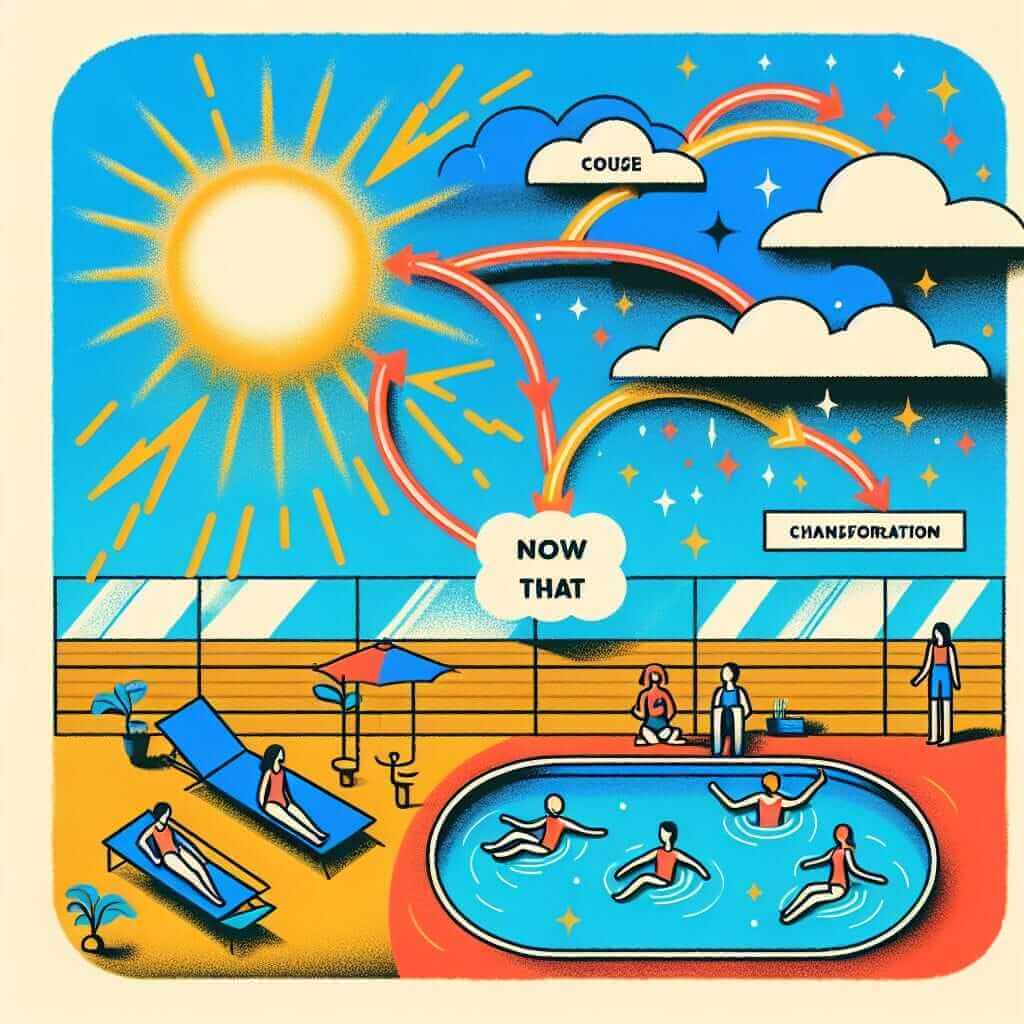The IELTS exam, a gateway to English-speaking universities and opportunities, demands a strong grasp of grammar nuances. One such nuance, often overlooked, is the usage of “now that” to express cause and effect. This seemingly simple phrase can significantly enhance your writing, showcasing a sophisticated understanding of English grammar and boosting your overall band score.
Nội dung bài viết
Let’s consider these examples:
- Basic: The weather is warm. We can go swimming.
- “Now that”: Now that the weather is warm, we can go swimming.
The second sentence, using “now that,” clearly links the warm weather (cause) to the possibility of swimming (effect) in a more concise and impactful manner. This is the power of “now that.”
Understanding “Now That” in IELTS Writing
“Now that” signals a shift in circumstance, leading to a new situation or possibility. It’s particularly useful in IELTS writing tasks to:
- Explain reasons in Task 2 essays: “Now that more people are working from home, demand for spacious apartments in suburban areas is increasing.”
- Describe a change in a Task 1 process diagram: “Now that the liquid has been heated, it is transferred to a cooling chamber.”
- Add detail and sophistication to your writing: Replacing simple conjunctions like “because” with “now that” demonstrates a broader vocabulary and better sentence structure.

Mastering the “Now That” Construction
Formula: Now that + [clause (subject + verb)], [clause (subject + verb)].
Breakdown:
- “Now that”: This phrase introduces the cause.
- [Clause (subject + verb)]: This first clause states the reason or change.
- [Clause (subject + verb)]: This second clause describes the result or effect.
IELTS Task 2 Example:
Prompt: Many people believe that social media has had a negative impact on interpersonal relationships. To what extent do you agree or disagree?
Body Paragraph: It is undeniable that social media has altered the landscape of human interaction. Now that people are constantly connected online, face-to-face communication has dwindled. This shift can be detrimental, as it limits opportunities to develop empathy and genuine understanding, skills best honed through direct personal exchanges.
Analysis: The use of “now that” effectively connects the rise of constant online connectivity to the decline in face-to-face interaction. This clear cause-and-effect relationship strengthens the argument presented in the paragraph.
Using “Now That” for a Higher Band Score
- Varied Sentence Structure: Instead of always starting with “now that,” try placing it in the middle: “Online education is gaining traction, and, now that internet access is improving globally, its reach is expanding even further.”
- Synonyms and Alternatives: While “now that” is effective, explore synonyms like “since,” “given that,” or “seeing as.” This variety demonstrates flexibility and a wide range of vocabulary.
- Formal Tone: Remember that “now that” is generally more formal than “because.” Use it appropriately in academic writing tasks.
Common Errors to Avoid
- Incorrect Tense Usage: Ensure the tenses in both clauses align logically. “Now that I have finished my work, I can relax” (present perfect + present simple).
- Overuse: Like any good tool, “now that” is best used strategically, not excessively. Overuse can make your writing sound repetitive.
Conclusion
Mastering the usage of “now that” can be a subtle yet powerful way to enhance your IELTS writing. By understanding its function, applying the correct structure, and exploring variations, you can add sophistication and clarity to your arguments and descriptions. Remember, even small grammatical tweaks can contribute to a significant difference in your overall band score. So, embrace the power of “now that” and watch your writing flourish.